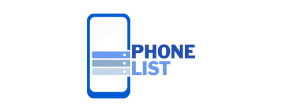A picture may be worth a thousand words, but in an SEO-conscious world, pictures can weigh you down in your rankings. Follow these steps to optimize your images, keeping your image file size small and your page speed score big:
1Use the right file format
Using the right image format can save you BIG on file size! The two most common formats for images are .JPG (or .JPEG) and .PNG.
- .JPG files are great for photographs, images phone number library with color gradients or images with a lot of different colors.
- .PNG format is used for flat-color files like logos and images with transparent backgrounds.
Check out the dog picture below. This image saved as a .JPG is only 243k. If it is saved as a .PNG it is over 3MB.
Resize your images
The dimensions needed for your image can vary depending on the layout of your page. If the image is going to be used as a header which will go all the way across the screen, it needs to be around 1800 pixels wide. If it is going to be a small image in the body of the page, it can be much smaller. Use an image-editing program like PhotoShop if you have it, or you can use an online site like pixlr.com to resize your images.
You can also resize your image in
WordPress from the Media Library. This even when she was six or seven method works great if you have already uploaded non-optimized images. Just keep in mind if you use the image in more than one place on your site, the new size will be shown for all of the instances the image is used. *If you are going to use this method, make sure to optimize your image first (Step 3).
To resize an image, go to your Media Library b2b reviews and click on the image you want to use.
You can see in this window the file size is 243 KB and the dimensions of the photo are 1800 × 1736. Under the image, there is a button that says Edit Image.

